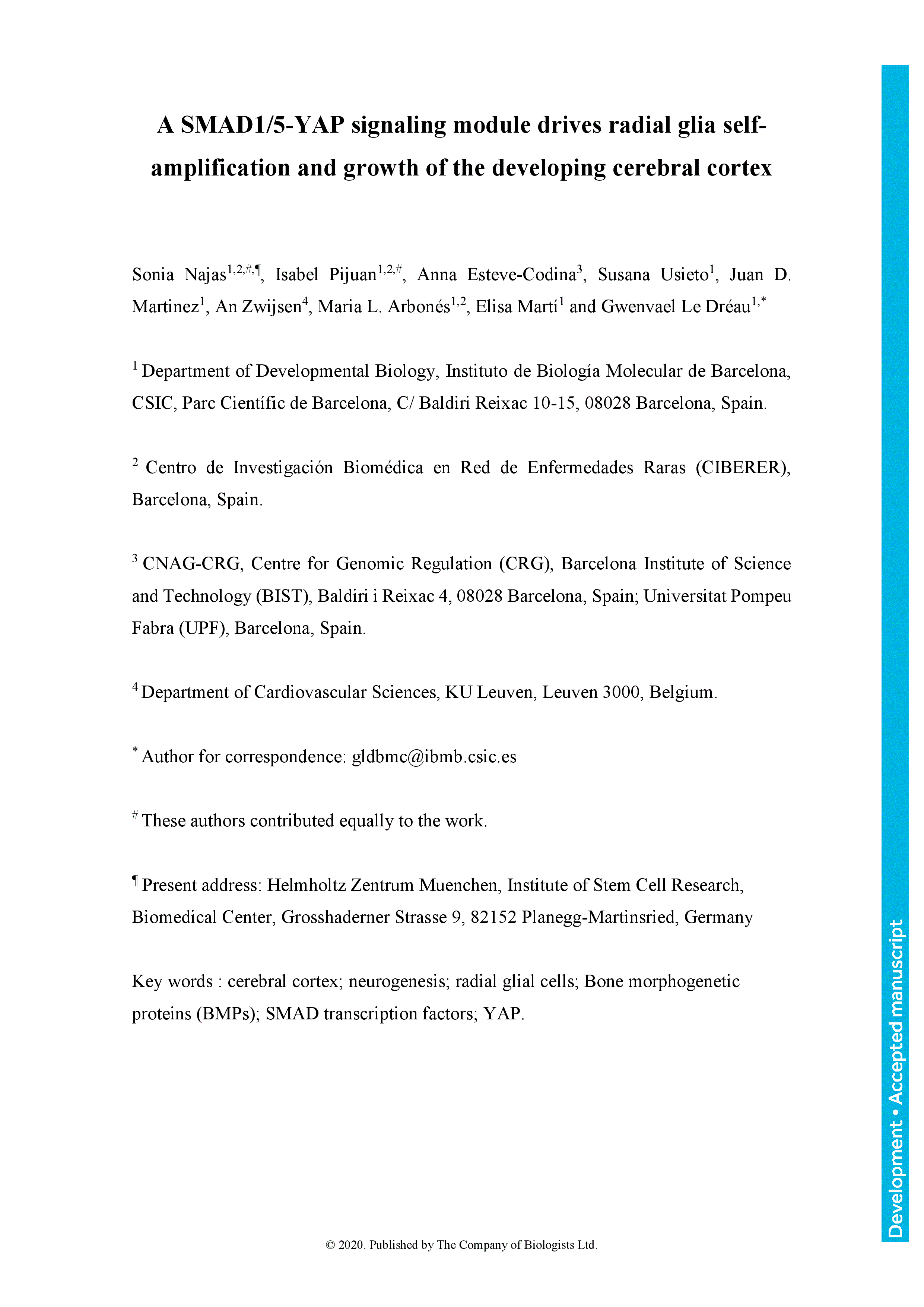The growth and evolutionary expansion of the cerebral cortex are defined by the spatial-temporal production of neurons, which itself depends on the decision of radial glial cells (RGCs) to self-amplify or to switch to neurogenic divisions. The mechanisms regulating these RGC fate decisions are still incompletely understood. Here we describe a novel and evolutionarily conserved role of the canonical BMP transcription factors SMAD1/5 in controlling neurogenesis and growth during corticogenesis. Reducing the expression of both SMAD1 and SMAD5 in neural progenitors at early mouse cortical development caused microcephaly and an increased production of early-born cortical neurons at the expense of late-born ones, which correlated with the premature differentiation and depletion of the pool of cortical progenitors. Gain- and loss-of-function experiments performed during early cortical neurogenesis in the chick revealed that SMAD1/5 activity supports self-amplifying RGC divisions and restrain the neurogenic ones. Furthermore, we demonstrate that SMAD1/5 stimulate RGC self-amplification through the positive post-transcriptional regulation of the Hippo signaling effector YAP. We anticipate this SMAD1/5-YAP signaling module to be fundamental in controlling growth and evolution of the amniote cerebral cortex.
A SMAD1/5-YAP signaling module drives radial glia self-amplification and growth of the developing cerebral cortex
These authors contributed equally to the work.
Present address: Helmholtz Zentrum Muenchen, Institute of Stem Cell Research, Biomedical Center, Grosshaderner Strasse 9, 82152 Planegg-Martinsried, Germany
Currently Viewing Accepted Manuscript - Newer Version Available
Sonia Najas, Isabel Pijuan, Anna Esteve-Codina, Susana Usieto, Juan D. Martinez, An Zwijsen, Maria L. Arbonés, Elisa Martí, Gwenvael Le Dréau; A SMAD1/5-YAP signaling module drives radial glia self-amplification and growth of the developing cerebral cortex. Development 2020; dev.187005. doi: https://doi.org/10.1242/dev.187005
Download citation file:
Advertisement
Call for papers: Uncovering Developmental Diversity

Development invites you to submit your latest research to our upcoming special issue: Uncovering Developmental Diversity. This issue will be coordinated by our academic Editor Cassandra Extavour (Harvard University, USA) alongside two Guest Editors: Liam Dolan (Gregor Mendel Institute of Molecular Plant Biology, Austria) and Karen Sears (University of California Los Angeles, USA).
Choose Development in 2024

In this Editorial, Development Editor-in-Chief James Briscoe and Executive Editor Katherine Brown explain how you support your community by publishing in Development and how the journal champions serious science, community connections and progressive publishing.
Journal Meeting: From Stem Cells to Human Development

Register now for the 2024 Development Journal Meeting From Stem Cells to Human Development. Early-bird registration deadline: 3 May. Abstract submission deadline: 21 June.
Pluripotency of a founding field: rebranding developmental biology

This collaborative Perspective, the result of a workshop held in 2023, proposes a set of community actions to increase the visibility of the developmental biology field. The authors make recommendations for new funding streams, frameworks for collaborations and mechanisms by which members of the community can promote themselves and their research.
Read & Publish Open Access publishing: what authors say

We have had great feedback from authors who have benefitted from our Read & Publish agreement with their institution and have been able to publish Open Access with us without paying an APC. Read what they had to say.



